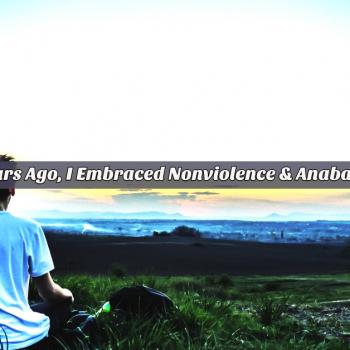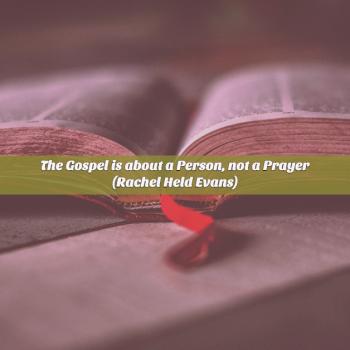*The following is a book review written by Lawrence Garcia.
Lawrence is the Senior Teaching-Pastor of Academia Church in Goodyear, Arizona. He is a pastor devoted to the educational growth of his congregants, and the raising up of a new generation of disciples, who will think, tell, and live out the Christian story. Lawrence is currently attending Liberty University.
————————————————————-
Momentary confession, Jesus on the pages of the Gospels—the champion for the poor and marginalized, the healer of the diseased, the denouncer of oppressive structures, and the reconstituter of communities—“Have I loved.” “But Paul?”—the author of draconian household codes, impossible ethical standards, and authorial affirming dogma—has often left me living out a type of Christianity that oscillates between Jesus’ baptism and Damascus road. It is precisely such a dilemma that J.R. Daniel Kirk’s latest book Jesus Have I Loved, but Paul?: A Narrative Approach to the Problem of Pauline Christianity sets out to solve through a narrative re-reading of the Pauline corpus. Kirk states, “Such a positioning of Paul within the larger narrative sweep of Israel’s history… frames the invitation to rediscover the apostle on the following pages (4).”
Kirk begins this narrative rediscovery of Paul with God himself as understood not in the abstract categories of omni-this or omni-that, but “as someone who is at work within and even bound to the story of Israel.” In other words, before we can demonstrate that Paul is in continuity with Jesus’ ministry we must first ground them within the story they both understood themselves to be playing a part. This methodology is somewhat characteristic of how the rest of the chapters are constructed: (1) the story of Israel’s God and his people, (2) the story of Jesus as it relates to this foundational narrative, and (3) how Paul’s life and teaching fit neatly within the two. Albeit in a more concise manner, this is asserted by Kirk:
For now the important takeaway is that Jesus as we meet him on the Gospels is not living out a self-contained story. He is acting out a final, climactic scene in the ongoing drama of Israel that stretches back to creation and comes to its promised resolution with his death and resurrection. And we see the same claim with Paul (15).
It is when we place the various topics that Kirk brings to the table to be examined within this narrative framework—“Christianity as Community,” “Judgment and inclusion,” and “Liberty and Justice for All,” just to name a few—that Paul, time and again, is proven to be in harmony with Jesus as portrayed in the Gospel stories. Thus, the very things that so often characterized Jesus’ ministry that we pre-Paulinists so cherish can finally begin to shine forth from beneath the caricatures of the Apostle: justice for the poor at Corinth, inclusion of the Gentiles at Galatia, and recognition of women’s ability to play roles normally reserved for males. All actions we’d expect from our beloved Galilean! Moreover, what I appreciated as Kirk teased out this storied-coherence between Jesus and Paul was that it was done with exceptional exegesis, honesty at points of contention, familiarity with first century culture, and an open willingness to re-assess some parts of our texts, inspired as they are, which may themselves need to be rethought in light of this cruciformed narrative. Particularly striking was the conclusion in the second chapter:
What it means, then, for us to be followers of Jesus is to live into the full potential of our God-given humanness. Or, put differently, we come more and more to bear the image of God that is the image of our older brother, Jesus. And this means that, like him, we will be agents of God’s reign. We will anticipate that not only our hearts but also our bodies, our communities, our justice systems, and our use of the earth will all become increasingly conformed to the pictures of self-giving, restorative love by which God has made himself known to the world in Christ (52).
Perhaps, what struck me most was Kirk’s willingness to take head-on difficult topics such as women’s place in ministry and homosexuality that are inevitable subjects that must be raised in a project of this nature. Moreover, the sensitivity that Kirk illustrates while navigating between the conflicting texts, gaps in cultural milieu, and the wider Israel-shaped narrative in which our stands must make ultimate sense is nuanced and well-articulated. I can only promise that he re-confirms some positions, challenges others, and proposes all new ones that may surprise many. Nevertheless, regardless of what side of the debate you stand, one thing is for sure, that if we live out a narrative of hatred we “may even be showing ourselves disqualified for the eternal life that comes to those who love God and neighbor.” Words that should be taken with all the gravity implied in them.
Overall, this book serves as a healthy corrective for those who, like myself, see a polarized relationship between the Messiah Jesus and the Apostle Paul. If allowed to have its intended impact, what we will see in our scholarship, teaching, and preaching is the great unifying theme that the one creator God has and is inviting us all to take our role within this redemptive narrative that Jesus fulfilled with pierced hands and that Paul’s beautiful feet proclaimed. And maybe, just maybe, having finally put the book down find yourself saying, “Jesus and Paul have I loved.” I know I did.












